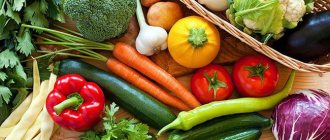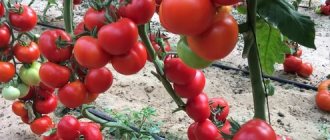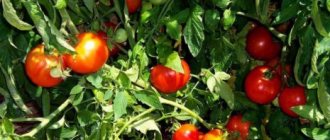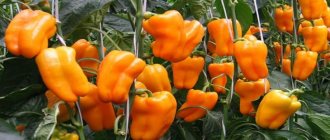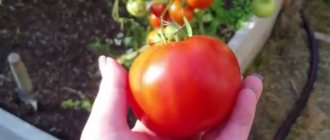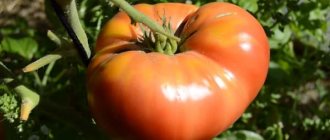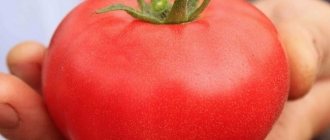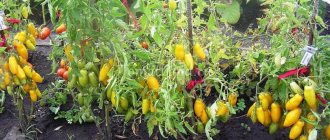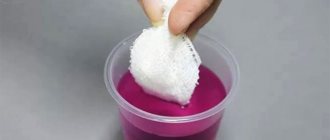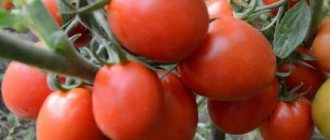The issue of choosing high-quality planting material does not lose its relevance throughout the year. People who are passionate about gardening search the Internet and in stores for old, proven varieties and select new hybrids. The modern market offers a huge amount of planting material from different manufacturers, and they all make loud promises about an excellent harvest, the beauty of flowers, etc.; the reliability of some of them can only be judged in the fall.
Seeds have proven themselves well among gardeners - both amateurs and professionals. You will find reviews about them, information about the manufacturer, varieties, etc. further in the article.
About seeds
In 2015, for her 76th birthday, she released a series of seeds called “Ural Summer Resident,” which was given for a reason. All planting material is specially selected and adapted for the conditions of the risky farming zone. This is a series of hybrids and varieties that give an excellent harvest even in the most unfavorable summer (the harsh Ural climate). Moreover, as you know, it can be not only cold and rainy, but also dry and very hot, and is also characterized by sharp temperature changes during the day.
Let us note that the “Ural Summer Resident” seeds, reviews of which you will find below, undergo quality tests (germination, purity, energy, humidity, etc.) every year before the new planting season at the Federal State Institution “Rosselkhoztsentr” in the Chelyabinsk region. All the company's products comply with GOST requirements and also have an affordable and attractive price. The latter is achieved through direct sales, without intermediaries and resellers.
Vegetable seeds from this manufacturer are divided into four groups, widely represented by various varieties and hybrids, differing in terms of ripening, fruit size, color and shape.
Care
The following are basic recommendations for caring for tomatoes of the “Red Banana” variety.
Bush formation
Plants form into 2 stems. In order for the bushes to develop well, they need to be tied to a support in the form of a wooden or metal post.
When tying up plants, do not overtighten them, otherwise fruiting will not occur.
To prevent the plant from growing too much, regularly remove excess shoots by hand. It is recommended to do this in the morning, when there is no risk of sudden precipitation. Before this, the plants are not watered or fertilized. It is better to carry out work wearing thin gloves. Treat the broken area of the stepson with ash.
Top dressing
At the beginning of the season, enrich the soil with nitrogen and add organic fertilizer. Regular manure or ash will do.
During the period of active growth, fertilize at least 3 times using complex fertilizers (Nanovit, Mivena).
When the plant begins to bear fruit, use fertilizers containing magnesium and potassium.
Weeding and loosening
After watering, be sure to weed the garden bed to prevent the growth of weeds.
Using sawdust, hay or sunflower husks mixed with soil, you can create a protective layer around vegetables. It will retain moisture and prevent weeds from growing. More about soil mulching is written here.
Loosening is best done immediately after watering or precipitation.
Watering
While the ovaries are not yet formed, water the plants every day. After this, you can limit yourself to 1-2 waterings per week.
If the plant is grown in open ground, during the rainy season avoid watering altogether.
Vegetables from the Ural Summer Resident
The simplest and most affordable in terms of price is the first group. It includes varieties and hybrids known in the “garden world”. All of them have long stood the test of time, and therefore are in demand and loved. Those who choose “Ural Summer Resident” seeds leave extremely favorable reviews about them, noting not only good germination, but also the stated high yield. Buyers are pleased with the fact that the plants are adapted to difficult climatic conditions. However, they are used not only in Siberia and the Urals, but also in the Moscow region, central Russia, where they perform even better.
Among the tomatoes, buyers note the following: “balcony miracle” (red, gold), varieties of “bull’s heart”, “lady’s finger”, “Spanish” (red, gold, pink, giant, dark crimson), “Ural giant”.
The second most popular vegetable in our country after tomato is cucumber. Without it, no garden will be considered complete. “Ural Summer Resident” offers self-pollinating and bee-pollinated species, varieties of Dutch and domestic selection. The hybrids “Herman F1”, “Dasha F1”, “Zozulya”, “Masha F1”, as well as “Prestige” are in demand on the market.
Lovers of sweet and hot peppers can also safely choose “Ural Summer Resident” seeds. Reviews about hybrids of this vegetable are not numerous, but positive. Like other crops, it has a good growth rate and stable fruiting. Gardeners recommend paying attention to long-known varieties and hybrids of sweet peppers: “Bogatyr”, “Bulgarian”, “giant F1”, “Hercules”, “Denis F1”, “California miracle”.
Agrotechnics of cultivation
They begin to grow seedlings in early March or in the first or second week of April. Seeds for sowing are prepared in advance, taking into account the following:
You may be interested in: Dates for planting tomato seedlings in open ground and greenhouses according to the garden calendar Favorable days for planting tomatoes for seedlings in 2022 according to the lunar sowing calendar Favorable days for picking tomatoes in 2022 after germination: timing of picking tomato seedlings in the table by day
- Disinfection. The grains are placed in a gauze bag and dipped for 20-30 minutes in a solution of potassium permanganate. Upon completion of the procedure, the seeds are removed, washed and dried.
- Pre-germination. The seeds are wrapped in a damp cloth, gauze or paper napkin, wrapped in a plastic bag and placed on a warm radiator. After 3-5 days, when the grains have cut through, they are ready for planting. Empty, unhatched seeds should be selected and discarded.
Sowing is done in a container with special nutrient soil and drainage, for which eggshells can be used at home. The seeds are poured into holes 1 cm deep, covered with soil and watered with warm water. To prevent diseases caused by blackleg, the soil is treated with professional antifungal drugs.
After the first leaves appear, the seedlings are transplanted into separate pots, and a week before planting in a permanent place, they are taken outside twice a day for 15-20 minutes to harden the plants. Young tomatoes are planted in a greenhouse at 50-70 days. For open ground - at the end of May or beginning of June.
The ground is pre-fertilized and dug up. Plants are placed according to the standard pattern for tomatoes - 30x50cm. Each bush is equipped with a support for tying.
Important! To ensure that the plant receives moderate moisture and the root system does not begin to rot, you need to water the bushes more often during growth and reduce the volume of water after the first ovaries appear.
Features of care
Despite the variety’s resistance to different temperatures and weather conditions, for high yields it is necessary to ensure proper care of the bushes, namely:
- Loosen the soil every 10-14 days, being careful not to touch the roots of the plant.
- In cool weather, water tomatoes less often, reducing the volume of water by half.
- Use soft fabric ropes for tying.
Important! The Banana tomato will actively develop in the soil where mint grows, but the plant may not survive next to white cabbage.
Vegetables from the “Siberian Series”
The second group of seeds is the “Siberian series”. The company decided to expand its range to include varieties and hybrids with even higher resistance to extreme weather conditions. All of them provide a stable and guaranteed harvest.
“Altai” (red and orange), “fighter”, “Budenovka”, “ox heart”, “Demidov”, “mandarin”, “bear trace” - all these are “Siberian” tomato seeds “Ural summer resident”. Reviews from gardeners are full of positive emotions about their favorite line “Teddy Bear” (yellow, crimson, red, orange, pink). This variety is super-yielding, mid-season with high resistance to diseases. Also popular is the “seedless” tomato (“Sprint-2”), which does not require shaping or gartering and is not affected by late blight.
Vegetable growers liked the series; not only tomatoes, but also sweet peppers attract attention (“Bull’s Heart”, “Magnificent Century”, “Golden Jubilee”, “Bear in the North F1”, “Mibiryak F1”, “Extreme”, “Siberian” felt boots F1"), cucumbers ("Altai", "vyugovey", "Tolyan F1", "sorcerer"), eggplants ("Siberian early ripening 148", "Vera"), white cabbage ("Alexandra F1", "dot") , carrots (“Altai sugar”, “Siberian shantane”), watermelon (“early ripening sugar”, “very first”, “chill”).
Collection and storage of tomatoes
There are several rules to consider:
- To store vegetables for a longer period of time, tear them off along with the stem;
- pick tomatoes when they are not fully ripe, they will ripen well in the sun;
- Wooden boxes are suitable for storage;
- To ensure safe transportation, place the vegetables in separate rows.
Under favorable conditions, vegetables can be stored raw for up to 150 days.
Professional seed series
The company recently launched the “Professional Seeds” series. “Ural Summer Resident” (reviews in the text) is actively developing and offering its customers a better quality product. These are the seeds that are used in greenhouses and farms. Almost 100% of these are F1 hybrids, exhibiting high yields and disease resistance. The price of such planting material is much higher, so in reviews you can often find doubts about its purchase. However, one should not lose sight of the fact that the technology for obtaining such seeds is more complex and multi-stage, but the results often exceed all expectations. They can be distinguished by their specific black packaging with a note in the margin “Professional Series”.
Sustainability
It is worth mentioning separately the sustainability of tomatoes of this variety.
To external conditions
"Banana red" can be grown in different climatic conditions as it has good resistance to climate change. Formed plants tolerate heat and cold well.
To diseases and pests
Among the main problems that can affect Banana Red are:
- Cladosporiosis. Occurs when the permissible air humidity level is exceeded. It appears as yellow spots covering the surface of the leaves. The reverse side is covered with a grayish coating. As the pathology progresses, the leaves wither and their color turns brown. To prevent the development of the disease, observe the necessary growing conditions, and also spray the leaves with weak garlic or iodine solutions. You can cure plants by purchasing preparations containing copper.
- Late blight. It may appear if it rains for a long time or there are frequent climate changes. The main sign of the development of the disease is the appearance of dark brown spots on the leaves and fruits of tomatoes. The disease can be prevented by taking precautions when pruning shoots or by sprinkling the plants with a weak salt solution. Treatment is carried out with the drug "Fitosporin".
- Fusarium. It is a fungal disease. Develops due to improper planting or lack of lighting. First of all, the tomato leaves turn yellow and curl into tubes. The plant begins to wilt. The last thing to die is the root system. The plant rots and soon dies completely. Symptoms are more severe in hot weather. To prevent disease, treat the soil for planting with a solution of copper sulfate. Plants can be cured using the drug Trichodermin, but this must be done as early as possible.
- The tomato is moderately vulnerable to pests, one of which is whitefly. To protect plants from parasites, treat them with insecticides at the first sign of damage.
For preventive purposes, treat every 14 days after the formation of ovaries.
“Ural summer resident”: premium seeds
Reviews about the so-called premium seeds are very mixed. We should start with the fact that the series was launched relatively recently, but is represented widely: from tomatoes and peppers to dill and radishes.
They are more expensive compared to simple seeds. On average, one bag will cost 150-160 rubles. This is despite the fact that it only contains 5-6 tomato or cucumber seeds. It’s no wonder that not everyone can afford premium-class seeds “Ural Summer Resident”.
Tomatoes have positive reviews. Negative feedback is mainly due to the fact that the cucumber harvest is not the same as stated in the picture. The reasons do not always lie in the company's dishonesty. Firstly, there are times when fake seeds go on sale, so we recommend that you purchase them directly from the manufacturer. Secondly, strictly follow the rules and recommendations that are given regarding planting and caring for each specific hybrid or variety, as this is of fundamental importance.
Of course, it’s worth trying the premium seeds “Ural Summer Resident” at least once. Tomatoes have received very favorable reviews. Pay attention to the hybrids “female share”, “red guard”, “Maryina Roshcha”, “noble fat man”, “meteorite”.
Conclusion
Knowing what varieties of heart-shaped tomatoes other gardeners select, it will be much easier for you to choose something for yourself. Don’t forget, all indeterminate tomatoes require pinching, pruning of leaves, and growth restriction. Pinching is done so that the already formed ovaries have time to fully ripen before the onset of autumn. If you ignore the basic rules of agricultural technology, you can’t hope for a bountiful, high-quality harvest. Absolutely all varieties, even the most unpretentious ones, require attention.
What else does the Ural Summer Resident have?
This company’s selection of seeds is not limited exclusively to vegetable crops. You can buy almost everything you need for your garden in its official store. Vegetables are represented by all traditional crops adapted to the climate of the Urals, including beans, fennel, asparagus, tobacco, daikon, sunflower, chard, zucchini and squash, beans and aromatic herbs.
"Ural Summer Resident" has a large selection of flower seeds, both annual and perennial. Among them you will find not only the familiar variety of zinnias, asters, and phlox, but also exotic, rare plants.
In addition, the seed producer offers its customers the mycelium of mushrooms: porcini mushrooms, aspen boletuses, boletus mushrooms, boletus mushrooms, chanterelle mushrooms and saffron caps.
